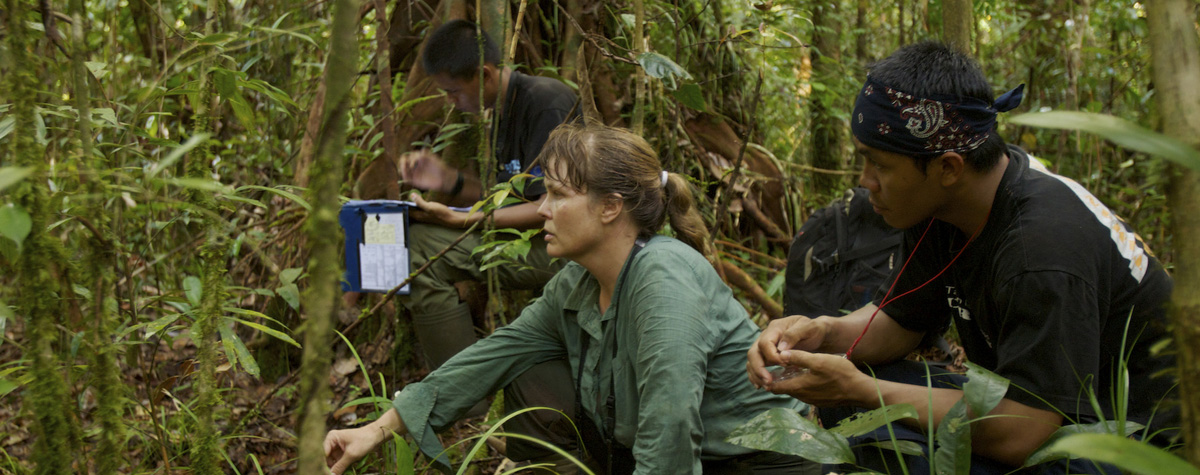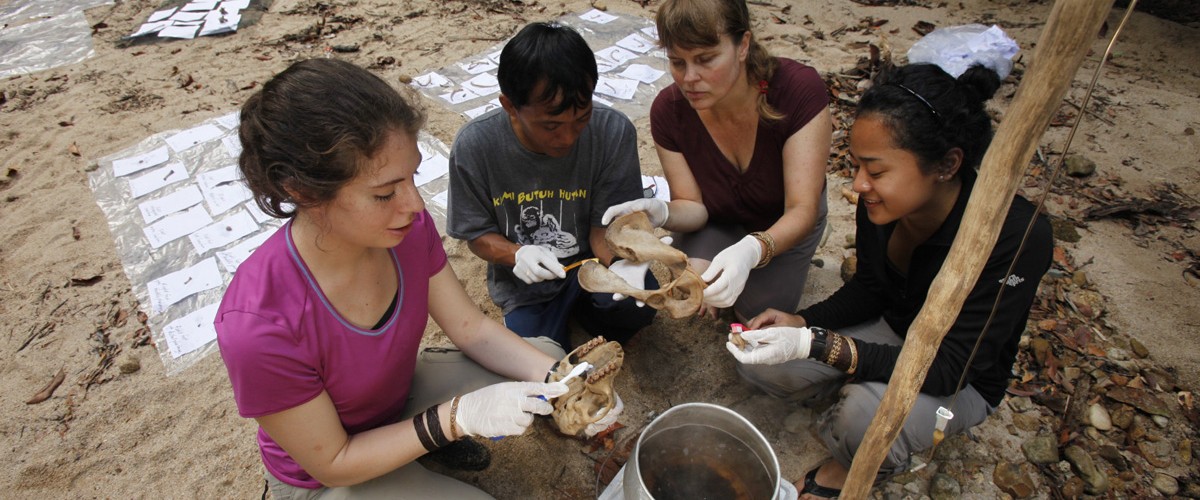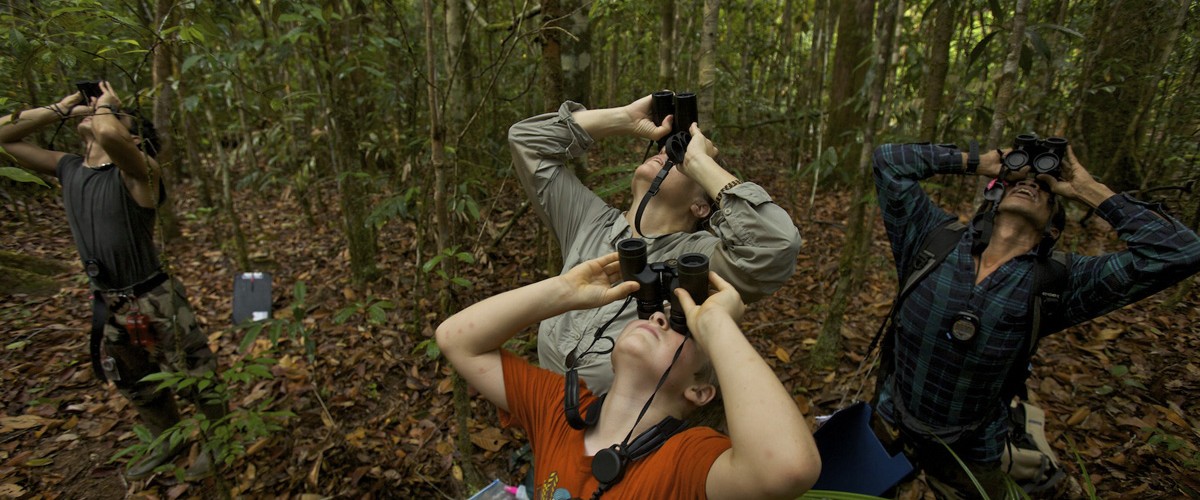By Ahmad Rizal, Research Manager & Tri Wahyu Susanto, Research Director
The Rangkong River is located in Gunung Palung National Park, and was the location of massive illegal logging activities in the early 2000s. Around this river are three habitat types – freshwater swamp, peatland swamp, and kerangas (heath forest). This lowland forest area is home to a variety of wildlife within the Park. Because this forest was altered due to anthropomorphic forces (in this case, logging), the Rangkong River area has sparked new research questions for our project, and has been designated as a new research area in the Park.
Routine research activities began in the Rangkong area in 2016 by the long-term research project known as the One Forest Project. Then, in 2019, GPOCP/Yayasan Palung worked together with the Gunung Palung National Park Bureau (BTN-GP) to conduct a survey of the orangutan population in the Rangkong, as part of a larger census project throughout the Park. Since then, several foreign researchers have started to pilot short research projects to see the potential for longer term research that can be carried out at the Rangkong River location.
Now, our plan is to conduct research on orangutans and their habitat in the Rangkong area, while also continuing our regular long-term research at the Cabang Panti Research Station. In January 2021, our research team, in collaboration with BTN-GP, began routinely conducting research activities at the Rangkong location. This research began with monitoring orangutan nests and collecting phenology data along forest transects. Several students from the National University in Jakarta also assisted with this research.

Left to right: Ahmad Rizal (Research Manager/author), Toto (Field Assistant), Wahyu Susanto (Research Director/author), Udin (Camp Assistant)
In order to implement long-term research activities in the Rangkong, we needed a more permanent structure to accommodate a full-time research team. The old camp consisted of only a simple pole structure with a tarp overhang. So, in January 2022, we began constructing a new camp which will provide greater comfort and safety for researchers.
The process of building a camp at the Rangkong River site involved the local people of Tanjung Gunung village, which is directly adjacent to the National Park, and serves as an entry point for researchers to get to the Rangkong River and Cabang Panti by foot. The provisioning and purchase of materials was the first goal. We bought local wood to build the new camp, paying close attention to ensure that all the wood was obtained legally, and was not cut from within the Park or other protected forest areas. BTN-GP assisted with this, and strictly supervised the process of obtaining wood for construction.
Next, we needed to transport all the materials from Tanjung Gunung to the Rankgong River camp location, which is about 7 kilometers. Village members helped to float wood upriver and carry other materials over the course of two days. After all the materials arrived to the location, we could finally start the building process. We hired craftsmen from Tangjung Gunung to build the camp.

The Rangkong camp consists of three buildings – the main camp for researcher lodging (with a small kitchen area and private sleeping room), an outhouse, and a small covered platform to house a generator. Throughout the construction process, we made regular visits to the construction site to supervise and make sure everything was going according to plan. The location of the camp is referred to locally as “bagan asam” which means “the mango camp” because this area of forest contains many mango trees. We plan to name the building at the Rangkong site “Camp Mangifera” after the Latin name for the mango genus.
On February 17th, less than two months from the start of construction, all the work was completed! We are very satisfied with the results of the construction of the new camp. Now we are even more excited to continue developing new research as this site. We are also confident that foreign researcher will be very happy with the camp and excited to conduct research here.



————-
Management of Cabang Panti Research Station is conducted by the Gunung Palung National Park Office (BTN-GP) in collaboration with GPOCP/YP. Scientific research is carried out in conjunction with the Universitas Nasional (UNAS) and Boston University.









